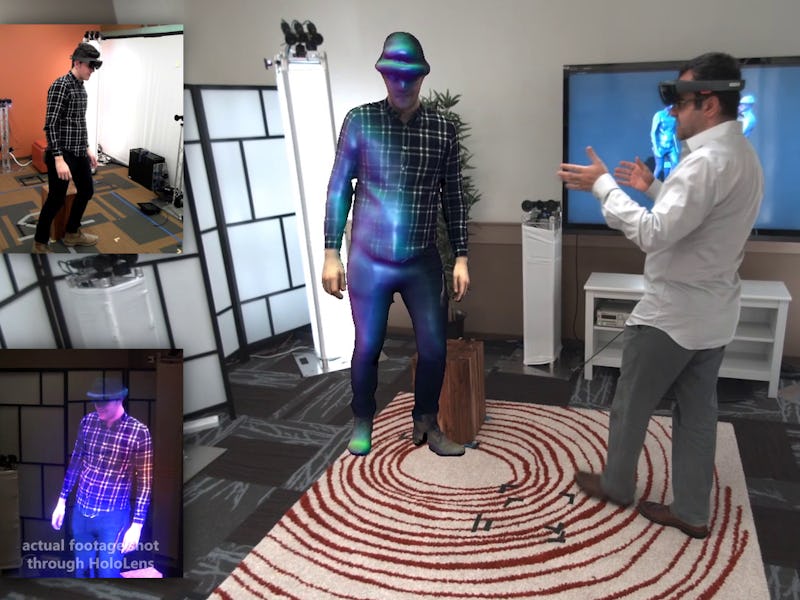Will Microsoft's HoloLens Users Soon Get to Experience Holoportation?
After watching the video demo, everyone wondered the same thing.

On March 25, 2016 — just a few days before the Microsoft HoloLens started shipping — Microsoft released a demo of its latest research project, which it’s calling holoportation.
Holoportation weaves together holograms and augmented reality. The neologism makes some sense: “holo-,” meaning whole or complete, and “-portation,” meaning something like “conveyance.” It plays on our fascination with teleportation. It’s a virtual transportation of you or a friend. It’s a telepresence. It’s transmogrification. It’s the future of FaceTime. And, if you’re an internet commenter, it’s the future of porn.
But Microsoft is more sentimental than that, and its motivations more innocuous. Microsoft thinks holoportation will be great for family time and for filling out the virtual pages of the future’s scrapbooks. Microsoft wants you to imagine inviting a virtual someone into your living room to hang out and chat, à la Darth Vader and Emperor Palpatine, or to imagine reliving memorable moments in full 3D, à la John Anderton in Minority Report.
The project’s video demo, since it hit YouTube, has racked up more than two million views. The video’s success is understandable: it’s exciting technology, long forecasted in science fiction. While holograms themselves are not new, live, 3D, interfacing holograms are.
Researchers involved with holoportation have certainly expressed their excitement on the web.
Christoph Rhemann, researcher at Microsoft, (who is so proud that the announcement warranted four exclamation points):
Today we showed holoportation to the world! The era of 3D communications and living memories is here! We can teleport people live in full 3D to any place, record the whole session and live our memories later on, whenever we want! Imagine being able to teleport to any place, with anyone, at any time! it is real and it is already here [sic]
Yury Degtyarev, visiting researcher at Microsoft:
Holoportation is a new type of 3D capture technology that allows high-quality 3D models of people to be reconstructed, compressed and transmitted anywhere in the world in real time. When combined with mixed reality displays such as HoloLens, this technology allows users to see, hear, and interact with remote participants in 3D as if they are actually present in the same physical space. Communicating and interacting with remote users becomes as natural as face-to-face communication.
For the time being, holoportation is probably at least a few years off from mass-market. It requires a substantial array of 3D imaging systems (as you can see in the video above: cameras surround the subjects, capturing images from all angles) and the computing power to process, transmit, and interpret those images. It’s likely that, if it does make it out into the real world, its first iteration could be as arduous as Silicon Valley’s “telehuman.” But the fact that a demo is in the works and is being publicized should signal a shift; it’s not unreasonable to assume that other virtual and augmented reality companies are developing similar applications, and with haste.
For a more in-depth presentation than the YouTube video provides, watch this TED talk with Alex Kipman, Microsoft technical fellow. (The holoportation demo begins around the 10:55 mark.)